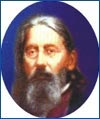Skin
Red, shining, hot swelling; violent pains.
Dark, miliary rash.
Rash like measles, pains in the joints; dry, barking cough cannot bear light; hot, dry skin.
Scarlet rash, with high fever.
Spots like flea-bites; itching unchanged by scratching.
Erysipelas, smooth skin; violent fever.
Erythema from the sun’s rays; papular erythema.
Yellow skin. Jaundice.
Dryness and burning of the skin.
Stages and States
Children’s diseases, with high fever.
Dark hair and eyes.
Persons leading a sedentary life.
Old age; sleeplessness.
Especially persons with tonicity (rigidity) of fibre.
Contra-indicated in fevers which bring out eruptions or are otherwise salutary, unless there is agonizing tossing with dry skin.
Relationship
Antidotes to it: Acet.ac, Paris, Vinum.
Aconite is an antidote to Bellad., Chamom., Coffea, Nux vomica, Petrol., Sepia, Sulphur, Veratrum
After Aconite follow well: Arnic. Bellad., Bryon., Sepia and Sulphur; in gastric states, after pulmonary febrile affection: Ipecac.; in colic: Arsen.; in cough: Bryon., Spongia.
Aconite may often be indicated after Arnic., Coffea, Sulphur and Veratrum
Mercur. follows well in dysentery.
Complementary to Coffea, in fever, sleeplessness, intolerance of pain; to Arnic. in bruises; and to Sulphur, high.
Ailments from Acon: Actea rac., Chamom, Coffea, Nux vomica, Petrol., Sepia, Sulphur.
Abuse of Aconite calls for Sulphur.

